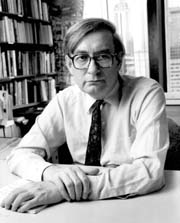Bruce Trigger facts for kids
Quick facts for kids
Bruce G. Trigger
|
|
|---|---|
 |
|
| Born | June 18, 1937 |
| Died | December 1, 2006 (aged 69) |
| Education | St. Mary’s Collegiate Institute Stratford Collegiate Institute |
| Alma mater | University of Toronto (B.A., 1959) Yale University (Ph.D., 1964) |
| Occupation | archaeologist and ethnohistorian |
| Spouse(s) | Barbara Welch |
| Children | Isabel Trigger and Rosalyn Trigger |
| Awards | Innis-Gérin Medal, Cornplanter Medal, Officer of the National Order of Quebec, Officer of the Order of Canada |
| Scientific career | |
| Institutions | Northwestern University McGill University |
| Thesis | History and Settlement of Lower Nubia (1964) |
| Doctoral advisor | William Kelly Simpson and Michael D. Coe |
Bruce Graham Trigger (June 18, 1937 – December 1, 2006) was a famous Canadian archaeologist, anthropologist, and ethnohistorian. He studied human history and cultures, especially through digging up old sites and looking at historical records. He was a special professor at McGill University in Montreal.
Contents
Life and Education
Bruce Trigger was born in Preston, Ontario, which is now part of Cambridge. He went to the University of Toronto and earned a degree in anthropology in 1959. Anthropology is the study of human societies and cultures.
He then went to Yale University and earned his Ph.D. in archaeology in 1964. A Ph.D. is a very high university degree. His main teachers were William Kelly Simpson and Michael D. Coe. After finishing his studies, he taught at Northwestern University for a year. Then, he became a professor at McGill University in Montreal. He stayed there for his whole career.
Bruce Trigger was married to Dr. Barbara Welch, who was a British geographer. She studied the Earth's natural features. Many people thought she was a very smart thinker, just like her husband.
Bruce Trigger had a big impact on how archaeology grew in Canada. Many people see him as one of Canada's most important thinkers.
His Work and Contributions
Bruce Trigger wrote many books and articles about archaeology. He explored many different areas of human history. One of his most important books was "A History of Archaeological Thought." This book is often required reading for students studying archaeology.
Another archaeologist named Leo Klejn said that Bruce Trigger was unique. He could creatively study many different topics. These included American Indians, Ancient Egypt, world civilizations, and the history of archaeology itself.
Archaeological Digs
While studying at Yale, Bruce Trigger worked on important archaeological digs. He was the main archaeologist for excavations in Egyptian Nubia in 1962. These digs were led by William Kelly Simpson. He also worked on another big dig in Sudan from 1963 to 1964. These projects helped save ancient sites before a dam was built.
Studying Indigenous History
In Canada, Bruce Trigger was very well known for his two-volume study called The Children of Aataentsic. This book was about the Huron peoples, also known as the Wendat. It is still the most important study of their history and culture. Because of this work, the Huron-Wendat Nation made him an honorary member. This was a very special honor for him.
He also wrote Natives and Newcomers. This book was for everyone, not just experts. In it, Trigger argued that both the colonial (European) and Aboriginal societies in early Canada were rich and complex. He believed that no one society was better than another.
Understanding Archaeology's Past
Trigger's book A History of Archaeological Thought looks at how the study of archaeology has changed over time. The first version came out in 1989. It was the first book to look at the history of archaeological ideas from medieval times to today, all around the world. A new, bigger edition was published in 2006. This book helps us understand how archaeological ideas develop within society.
Ideas About Archaeology
In his book Understanding Early Civilizations, Trigger compared how complex societies formed in different parts of the world. He looked at ancient Egypt, Mesopotamia, Shang China, the Aztecs, the Classic Maya, the Inka, and the Yoruba. He wanted to understand why these societies were similar and different.
Trigger also thought a lot about how archaeologists interpret what they find. He believed that the social and political situations of the time can affect how archaeologists understand the past.
For example, in an essay called "Archaeology and the Image of the American Indian," he showed how archaeological ideas sometimes supported unfair ideas about Native Americans. Before 1914, some people thought Native American cultures were simple and never changed. They even believed that large mounds were built by other, "more advanced" people. These ideas helped justify taking land from Native Americans. However, Trigger also believed that as more evidence was found, these wrong ideas could be corrected.
Awards and Honours
Bruce Trigger received many awards for his work. He became a member of the Royal Society of Canada in 1976. In 1985, he received their Innis-Gérin Medal. He also received the Cornplanter Medal in 1979.
The government of Quebec gave him the Prix Léon-Gérin in 1991. In 2001, he was made an Officer of the National Order of Quebec. In 2005, he became an Officer of the Order of Canada. These are very high honors in Canada.
His most special honor was being adopted into the Great Turtle Clan of the Wendat (Huron) Confederacy in 1989. They gave him the name Nyemea.
Bruce Trigger passed away from cancer on December 1, 2006. His writings and research papers are kept at the McGill University Archives.
See also
 In Spanish: Bruce Trigger para niños
In Spanish: Bruce Trigger para niños

